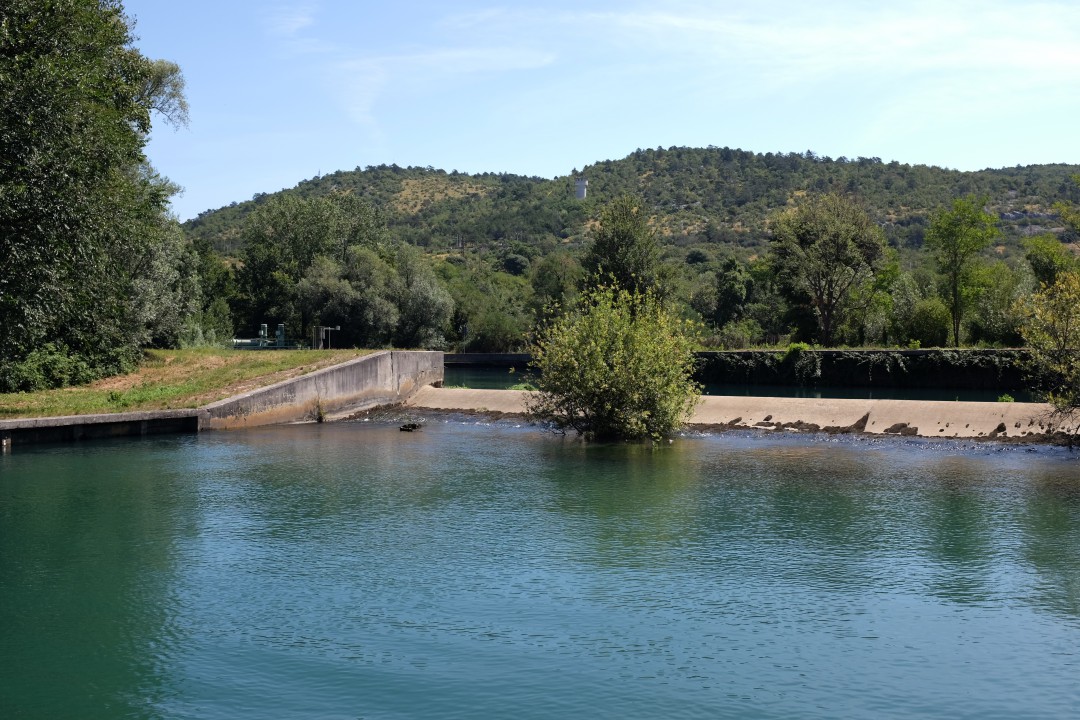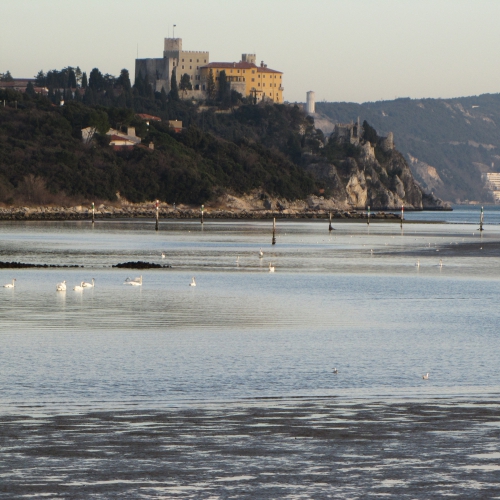
Descrizione
La particolarità di questo fiume sta nel suo corso, che si svolge per un lungo tratto sotto terra. Nasce dal monte Nevoso (Snežnik) dal picco Turkove škuljel , in Croazia a pochi chilometri dal confine sloveno, e percorre con il nome Timavo superiore, o Reka, un tratto iniziale di 37 km. A circa 15 km dal confine con la Slovenia e 25 Km dal centro di Trieste precipita nella grotta di S. Canziano (Škocjanske Jame) e prosegue il suo corso ipogeo per circa 40 km, per tornare alla luce a S. Giovanni di Duino sotto forma di ricche sorgenti, le cui acque danno origine ad un unico corso d'acqua lungo appena 2 km, che sbocca poi nel golfo di Trieste. E' il fiume più corto d'Europa che sfocia in mare, ma ha una notevole portata. Strabone, geografo greco del I secolo a.C., cita le sette bocche nel Timavo, mentre oggi ne sono conosciute tre ed un’altra è stata scoperta recentemente con esplorazioni subacquee. Dalla prima, a ridosso di una parete di roccia, le acque scaturiscono da gallerie che si trovano a circa 70 metri di profondità. Sul terzo ramo del Timavo sono stati trovati resti archeologici che attestano la presenza di un porto frequentato dal V secolo a.C. e rimasto in uso sino al Settecento. Il fiume Timavo, durante la Prima Guerra Mondiale, faceva parte del sistema difensivo del Monte Ermada, tenuto con grande valore dagli Austriaci perché chiudeva la strada per Trieste; il sistema subì pesanti bombardamenti nel corso delle varie offensive. In questa zona il Maggiore Giovanni Randaccio fu ferito a morte dai soldati austriaci il 28 maggio 1917 da cui prese il nome l’acquedotto triestino costruito nel 1929.

